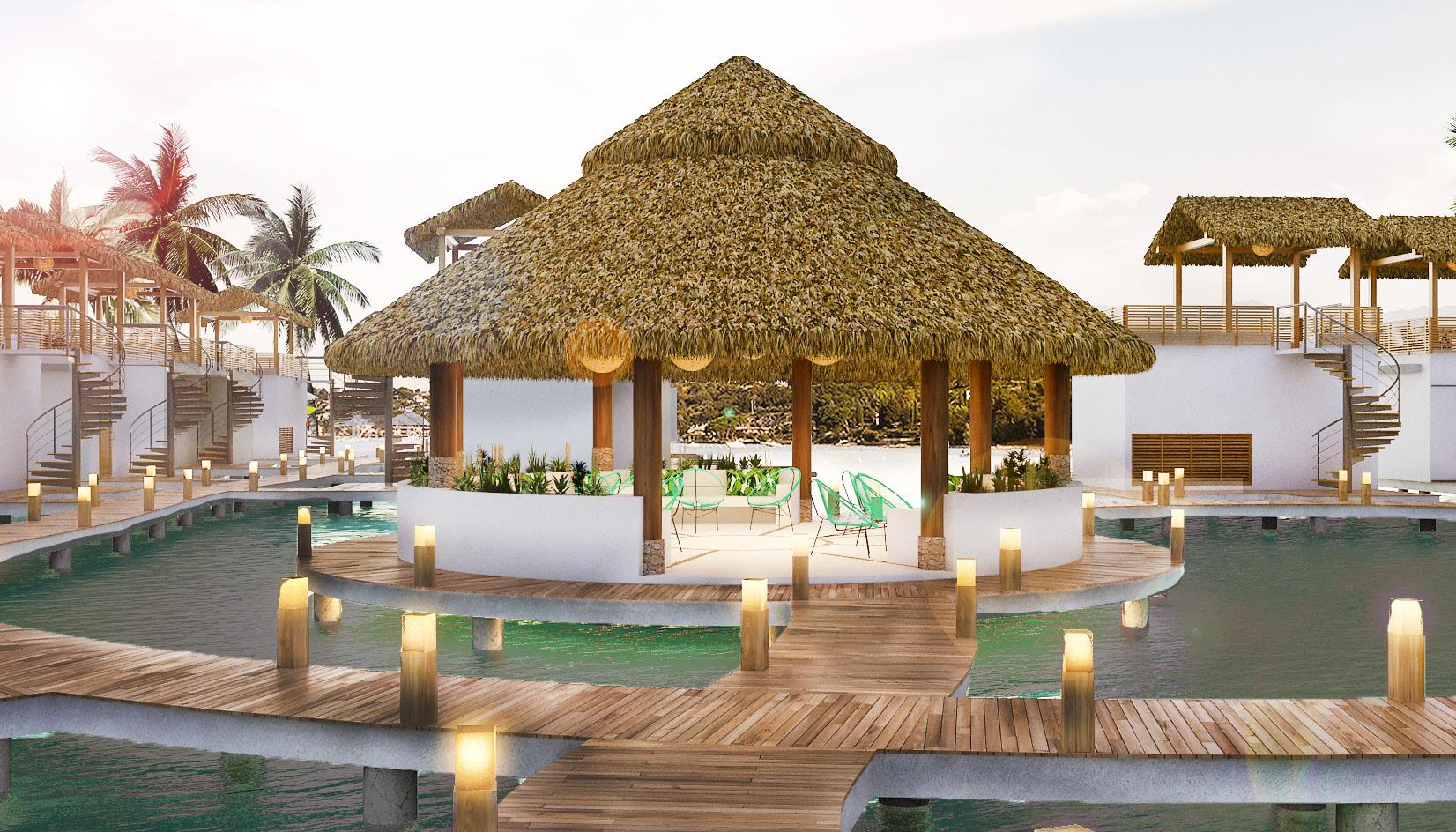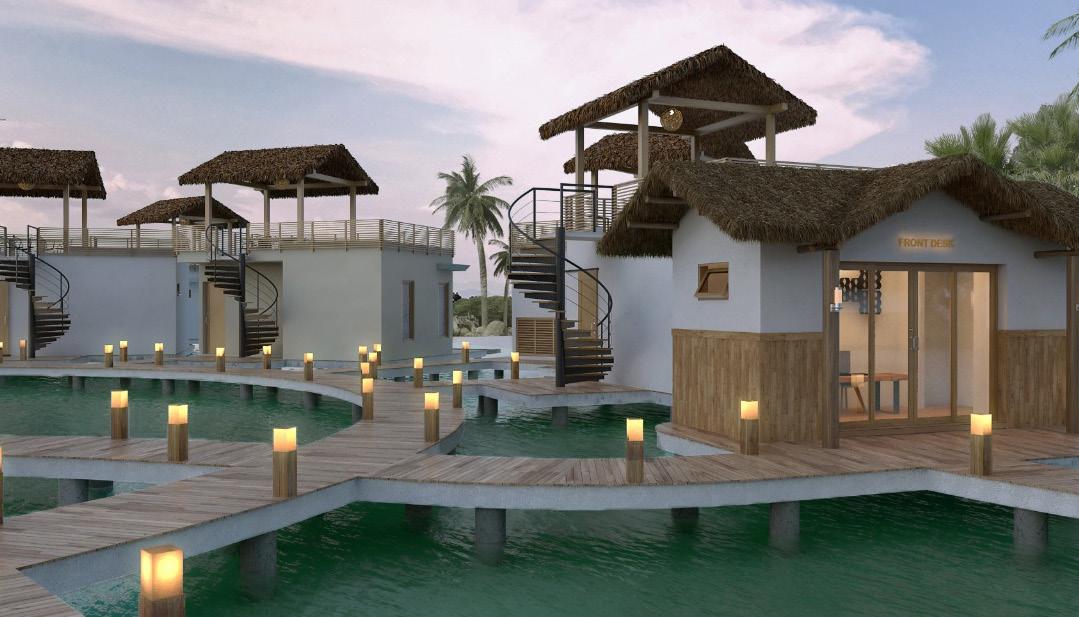
4 minute read
Why Own a Tiny Home
WHY OWN A TINY ECOFRIENDLY HOME IN CENTRAL OR SOUTH AMERICA?
By Patrick Hiebert
The tiny home, eco-friendly communities in Central and South America have been some of the most popular real estate offerings, both from a sales and a rental perspective, for nearly a decade. The meteoric rise of this movement raises the question: “What does simple living really have to offer?”


Patrick Hiebert is Chief Operating Officer for ECI Development, a company that creates value through socially responsible development of communities in Nicaragua, Belize, Costa Rica, Panama, and more. Patrick oversees all departments of the company’s efforts in Central and South American countries. More info available at www.ecidevelopment.com.
Most people learn sooner or later that an excess of material belongings tends to add stress to their lives. Possessions need to be maintained, and that can often be expensive and time consuming. So they decide to simplify their lives.
They reevaluate their life strategy and adopt a more minimalist approach. They may downsize their home or sell extra vehicles. They even start enjoying life with fewer things.
These same people tend to pursue self-sustainability in part by producing their own electricity through solar or wind, and reusing greywater to minimize water waste. They aren’t “eco-freaks,” but they are eco-sensible. They want to be good earth citizens, and at the same time know that eco-technologies have to have a financial benefit, as well, in order to stick.
This is where the demand for tiny, eco-friendly homes is born: the combination of the minimalist movement with the desire to be self-sustaining and eco-friendly. What’s more, the Central American climate allows residents to enjoy nature year-round, decreasing the need for large homes. In the world of today, with stark political division, riots, civil unrest, a pandemic, and government lockdowns, an unprecedented number of plan Bs are being put into action.
What makes tiny-eco homes a popular plan B residence is that they are inexpensive to buy and lease, inexpensive to maintain, nearly free from utility costs, and as rentals have an excellent return on investment because they are such popular destinations.
In essence, tiny homes are plan Bs that can generate rental income or become permanent residences.
Why Central and South America? the movement has gained serious momentum Central and South America are particularly popular in recent years, and it’s no surprise why. The locations for tiny-eco home tiny-eco home movement, which couples communities. Owning a tiny minimalism and self-sustainability, is a lifestyle available to anyone who understands that less home in a moderate climate allows residents to have more by making outdoors a more is truly more. substantial part of life. The home becomes just a place to eat and sleep. The rest of the time is spent in the yard, enjoying the tropical beach nearby, or simply watching monkeys. Central and South American locations are also exactly what today’s nomadic workers are looking for. Those who have the ability to work from anywhere as long as they have an internet connection, also known as digital nomads, often choose to work in the most beautiful places in the world. The number of global digital nomads is growing exponentially, and the work-from-home lifestyle ties in seamlessly with tiny-eco-home communities. Digital nomads want a small home footprint, reliable internet, a community with cool workspaces. They want to keep their expenses low and generally like being good earth citizens. Tiny-eco home communities check all the boxes. In addition to digital nomads, these communities are also sought after by wellness and spiritual retreat groups and corporate retreat groups. And of course, they are also an inexpensive vacation destination for regular vacationers and all-inclusive resort vacationers. These homes attract a massive rental market both for short- and long-term rentals. One of the greatest benefits of a tiny-home community is, of course, it’s location. Those looking for tiny homes can find Tahiti-style homes on the Caribbean island of Ambergris Caye in Belize, tropical highlands tiny home communities in Panama, vineyard communities in Argentina, as well as communities in Nicaragua, Mexico, Ecuador, and other South and Central American countries.
What Makes Tiny-Eco Homes So Popular?
The tiny eco home movement began in the 80s and experienced a surge in popularity within the last decade. This is due to a few things. People are trying to get away from the cost and stress of ownership of large homes. Less space also comes with fewer expenses and less maintenance. Some move with the intent to avoid civil unrest within the United States.
While financial and civil motives make the idea of simplifying life and removing stress very attractive, ultimately, tiny-eco homes owe their popularity to those who understand that less is more.
On the eco-friendly side, there is, of course, the worldwide movement by many people for doing their part to be good earth citizens. Alternative energy can actually provide a financial advantage, which equates to free electricity from the sun or wind, greywater reuse, meaning less water waste, green roofs that help insulate the home, local hand-made renewable wood furniture, etc.
All in all, combining the tiny-home lifestyle with an eco-friendly lifestyle can be very rewarding.Some may think, “You can’t make a home offgrid and have all the creature comforts too!” But that couldn’t be further from the truth. Living a simple life doesn’t mean giving up luxuries. Tiny eco homes can still have high-speed internet, flat-screen TV’s, modern appliances, king or queen beds, and all the things you would have in a bigger home if desired.








